Lattice Boltzmann methods for Complex Fluids
The lattice Boltzmann method is a mesoscale method for simulating complex fluids. This is something traditional CFD cannot do. We have a parallel and efficient implementation of the lattice Boltzmann method.
The study of transport phenomena in porous media is of great interest in fields ranging from oil recovery and water purification to industrial processes like catalysis. A great advantage of using lattice-Boltzmann (or lattice-gas) techniques in studying flow in porous media is that complex geometries can be easily implemented and the flow problem solved therein, since the evolution of the particle distribution functions can be described in terms of local collisions with the obstacles using simple bounce-back boundary conditions.
Synchrotron based X-ray microtomography (XMT) imaging techniques provide high resolution, three-dimensional digitised images of rock samples. By using the lattice-Boltzmann approach in combination with these high resolution images of rocks, not only it is possible to compute macroscopic transport coefficients, such as the permeability of the medium, but information on local fields, such as velocity or fluid densities, can also be obtained at the pore scale. This provides a detailed insight into local flow characterisation and can help in the interpretation of experimental measurements, such as NMR spectroscopy.
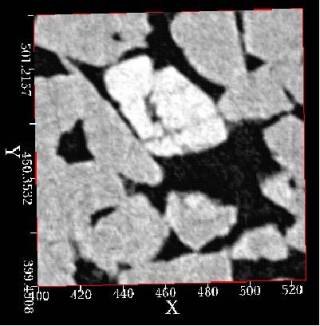 | 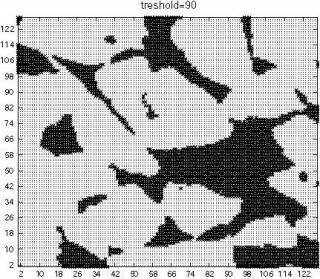 | 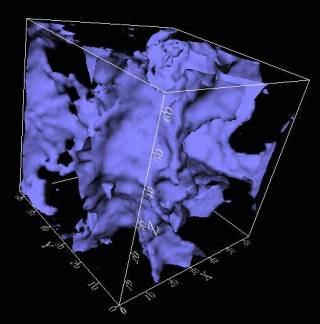 |
2d slice of Bentheimer sandstone from XMT imaging (left), its bitmap representation to be used in lattice Bolzmann simulations (center) and 3d isosurface of the pore space (right).
Single and two-phase, miscible and immiscible flow can be simulated in this rock using the lattice Boltzmann method, and quantities such as the rock permeability or relative permeabilities curves can be computed using Darcy's law.
The possibility to run large scale simulations, due to the high scalability of the lattice Boltzmann method, and to the availability of high performance computing resources accessible via the UK RealityGrid and the US TeraGrid, allows to study the dependence of permeability and flow patterns on the size of the sample.
Moreover it consents to study the flow field in rock samples large enough to capture the statistics of pores and throat distributions of the real rock, thus providing data that can be meanigfully compared with experiments.
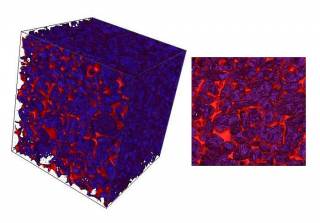
Visualization of a 512^3 sample of Bentheimer sandstone (full sample and 2d slice) at a resolution of 4.9 microns. The pore space is represented in red and the rock in blue.
The rock wettability can also be defined, thus permitting to discriminate between the fluids. In this fashion drainage (non-wetting phase displacing a wetting phase) and imbibition (wetting phase displacing non wetting-phase) processes can be simulated, and residual fluid distributions can be studied, as well as the velocity fields and velocity distribution. Preferred invasion paths and break-through time can be individuated and compared with experiments.
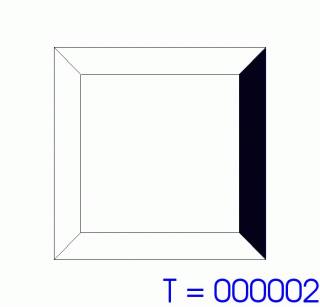
Movie from a lattice Boltzmann simulation showing oil (non-wetting phase) displacing water from a 512^3 sample of Bentheimer sandstone. The oil (represented in blue) invades from the right. The rock matrix and the water are not shown.
 Close
Close

